Toggle Background Color


Click above for a video. Heavily compressed due to the game being programmed by poo popo heads.
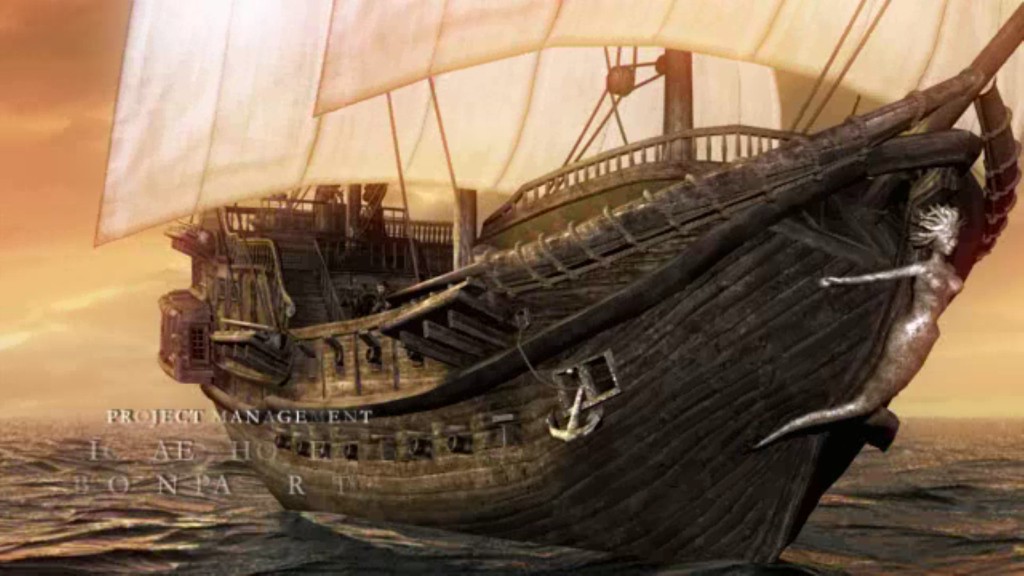
A lone ship is crossing the strait dividing the island of Khorinis from Myrtana, a kingdom ruled by Rhobar II. Aboard, the Nameless Hero (that's us!) and his companions are becoming increasingly worried. They expected their arrival at the shores of Myrtana to mark the beginning of a new, better future. Yet it seems that something went horribly wrong.
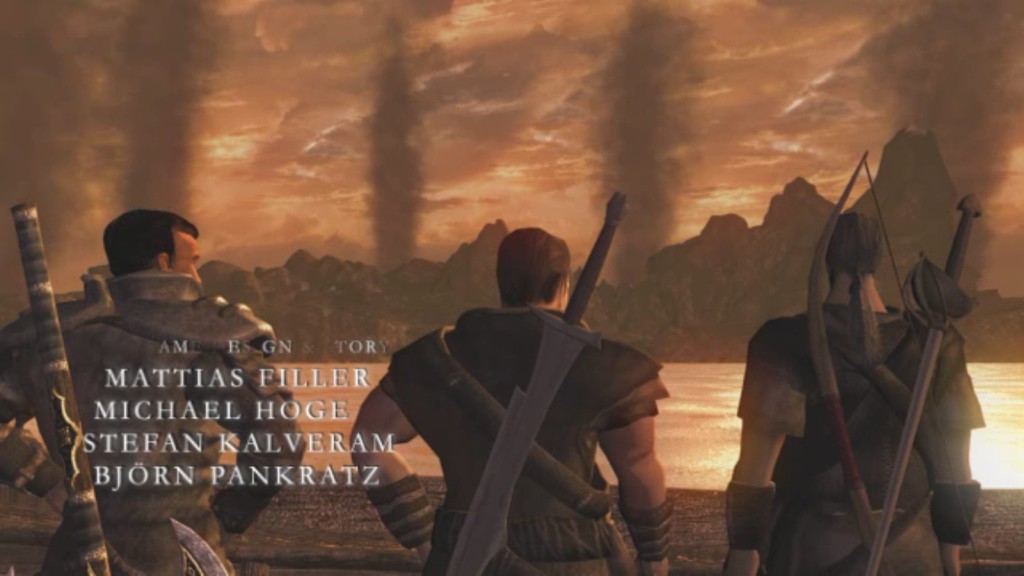
The frigate's modest crew anxiously observes the coastline. Columns of thick black smoke are towering over the land. That certainly does look like bad news.
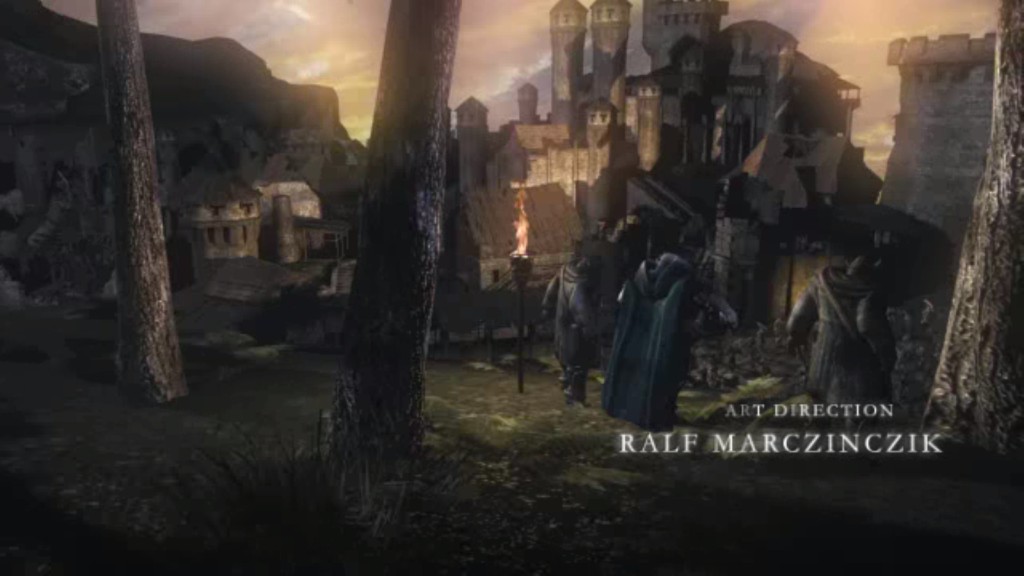
In the heart of the ancient and once powerful country, the exhausting war with orcs is about to reach its bloody end.
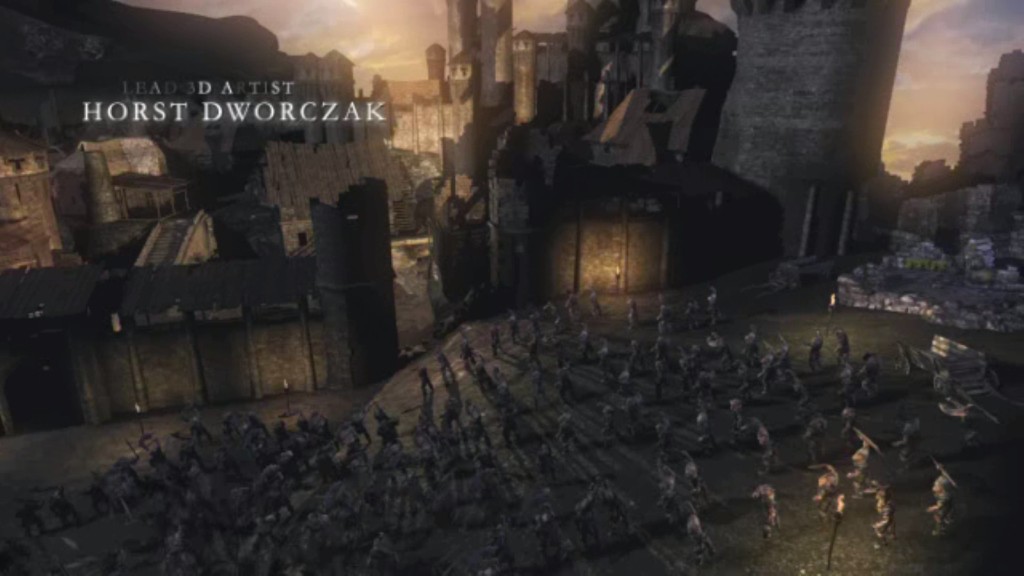
After years of resisting an unrelenting onslaught of the invading orc legions, human armies finally disintegrated and the enemy is standing at the gates of Vengard, the capital of Myrtana and the seat of Rhobar II.
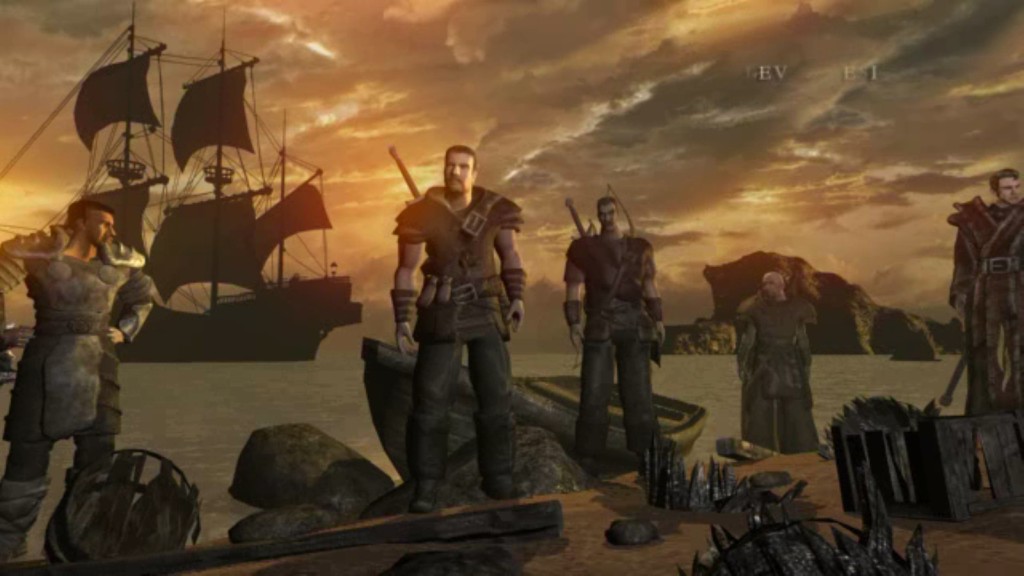
Unaware of the imminent fall of the last independent human stronghold, our heroes decided to drive a rowboat ashore and explore the surroundings.

Rhobar II, protected only by the inadequate feeble walls of his palace, grimly watches the hostile army lining up a stone's throw away from his windows.
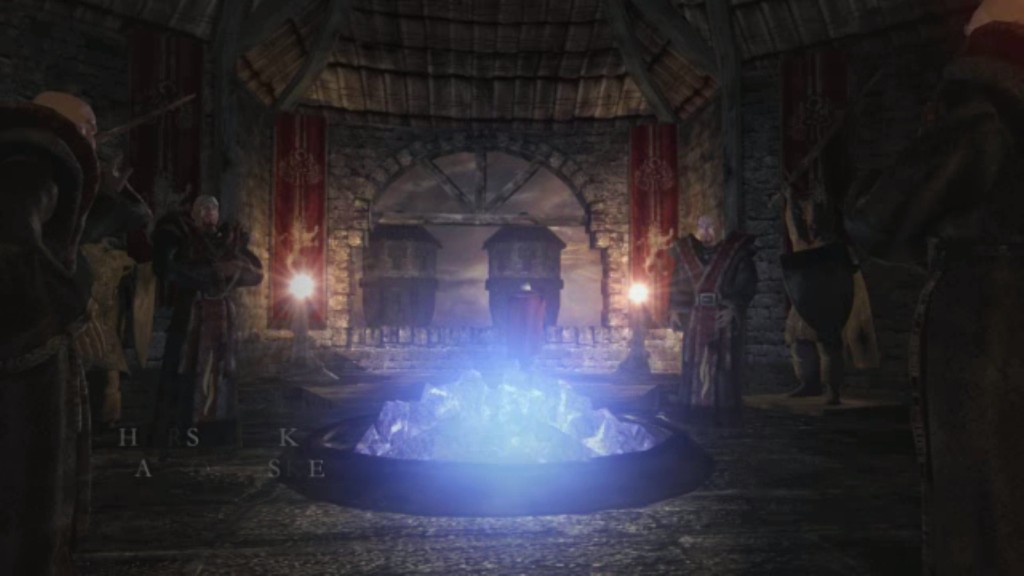
His Mages are preparing for one last ritual, a desperate gamble that could protect the capital from the incoming assault.
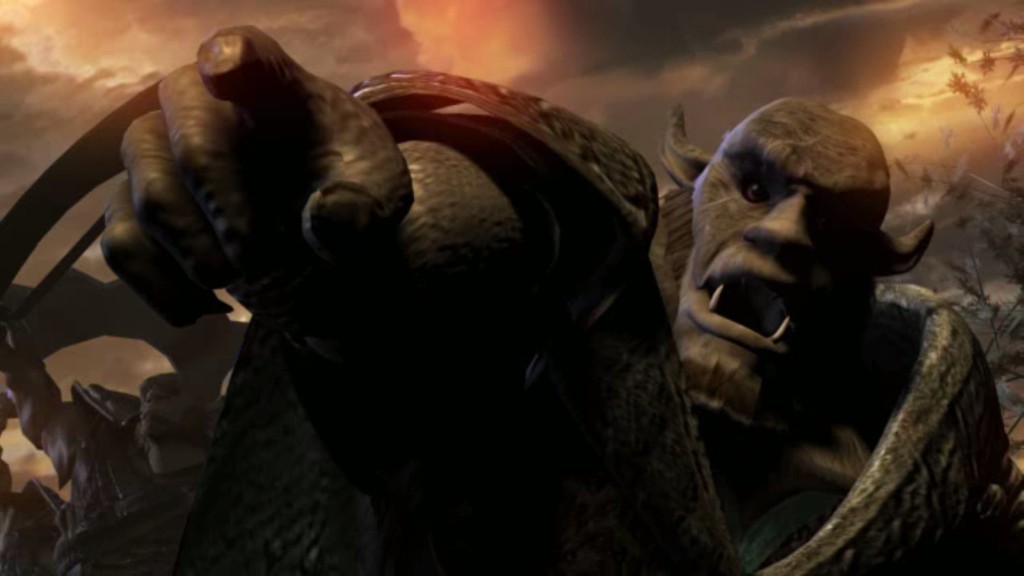
The orcs begin to move, the ground trembles.
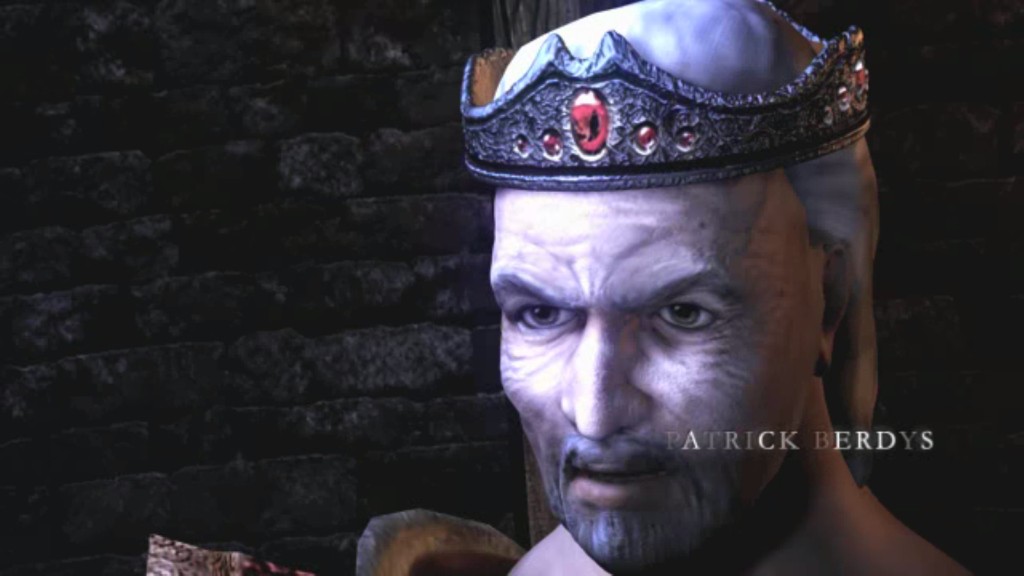
Without joy, Rhobar approaches his Mages, ready to play his part in the ritual.

As the first wave of orc warriors rushes into the city proper, completely annihilating any resistance it comes upon...

... the combined power of the Circle of Magi summons an incredible amount of condensed energy.
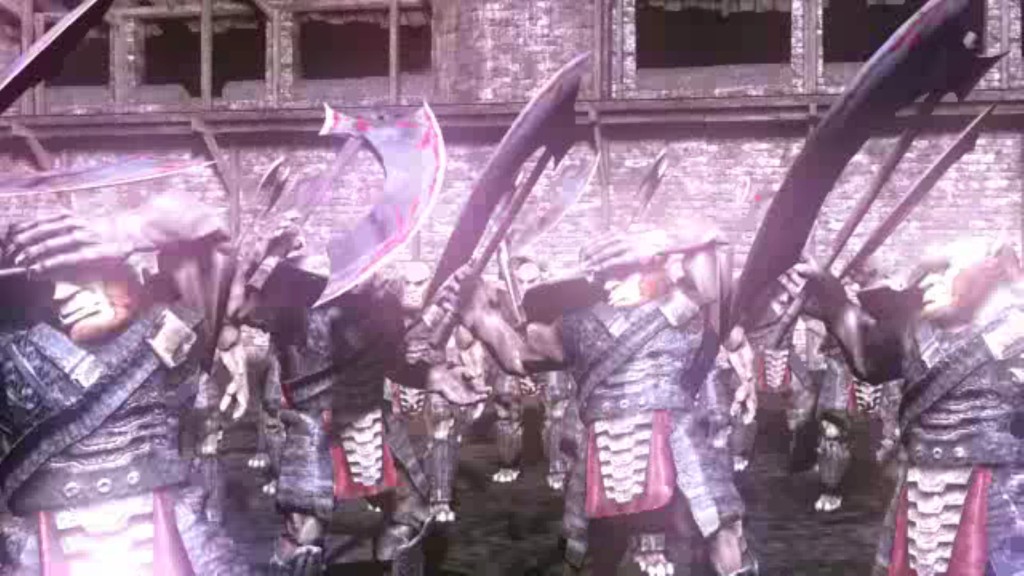
The rapid energy surge is strong enough to temporarily blind every living soul within the city.
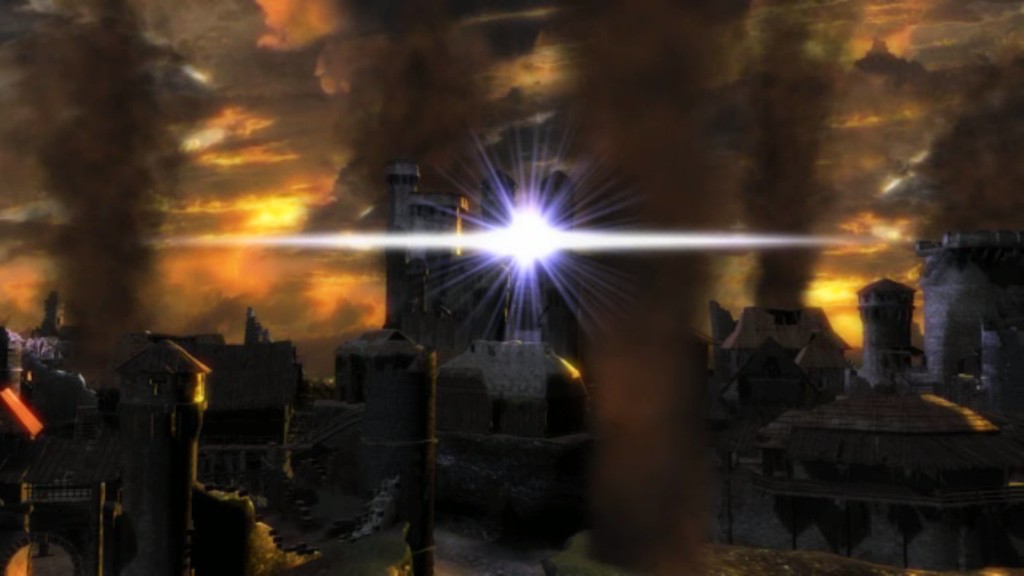
Powerful beams of light stream through windows until the charge can no longer be contained and it explodes.
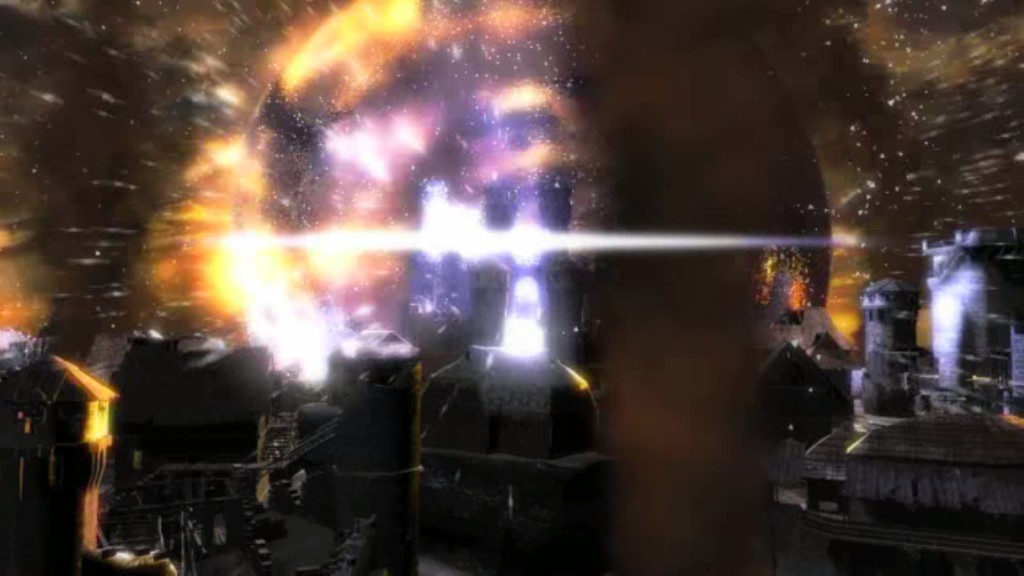
The violently shifting ball of energy expands into a giant sphere.
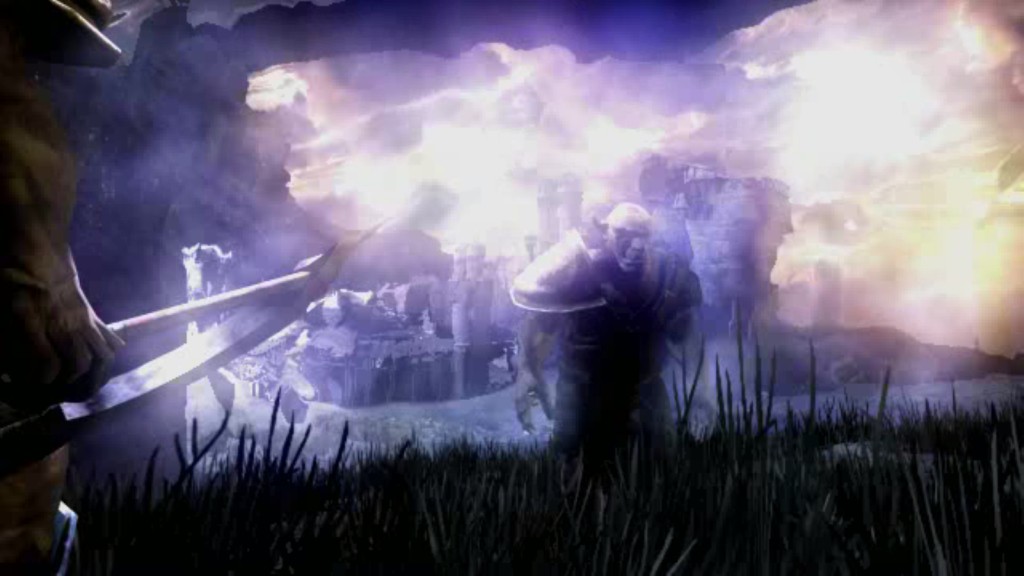
And it continues to grow; in a second, the entire city is contained inside a strange glowing dome. A Barrier has been erected over Vengard; from now on, no creature can enter or leave the vast areas covered by it. Most of the orc army is trapped outside the Barrier. Nevertheless, a considerable number of warriors is now imprisoned inside the city, pitted against the palace guard and any surviving men who are strong enough to hold a sword.
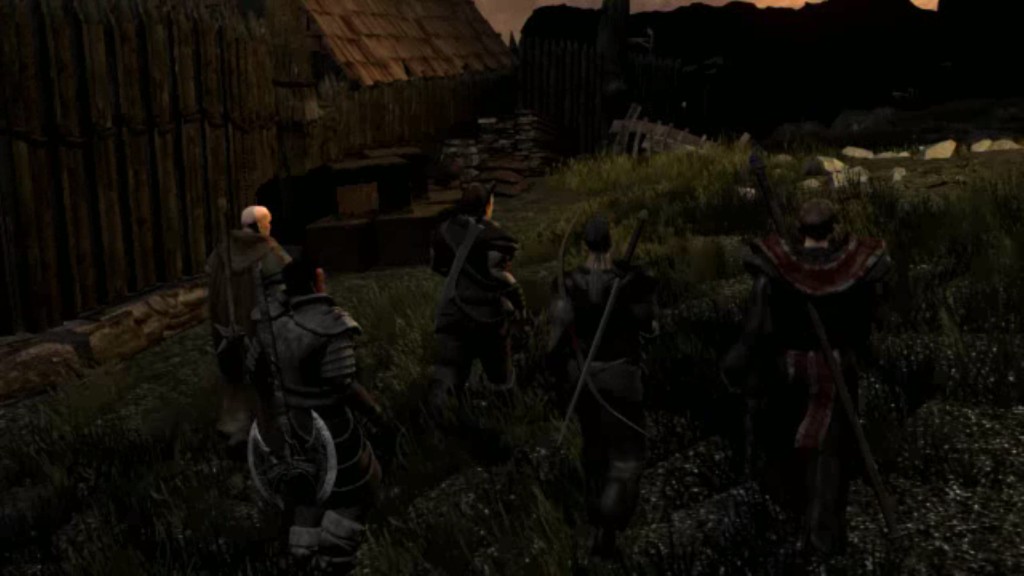
Meanwhile, the Nameless Hero and his party reach a small, quiet village near their landing spot. It is called Ardea.
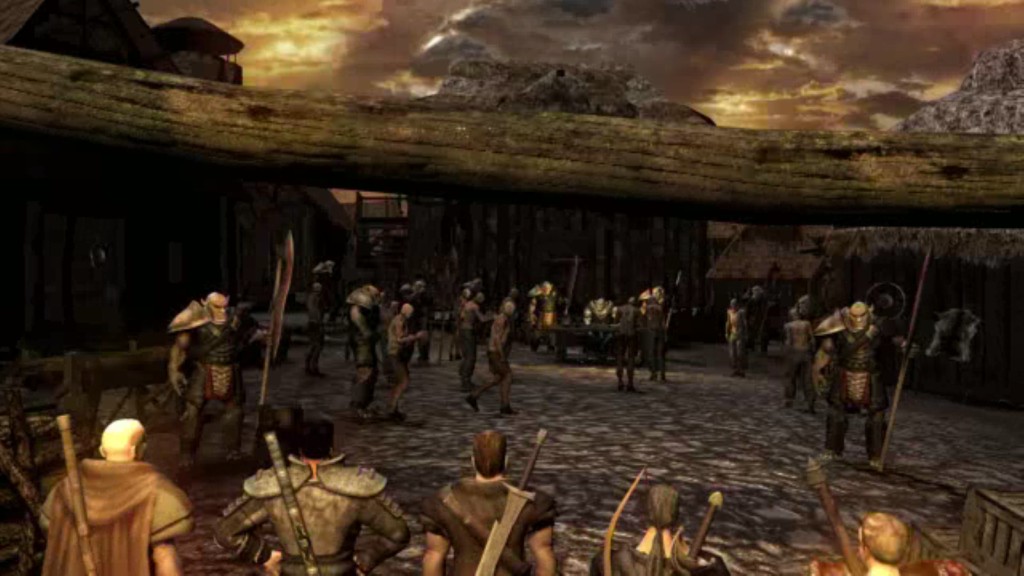
As they walk past the palisade, their fears are confirmed; a warband of orcs has rounded up the peasants and is apparently about to take some of them away as slaves.
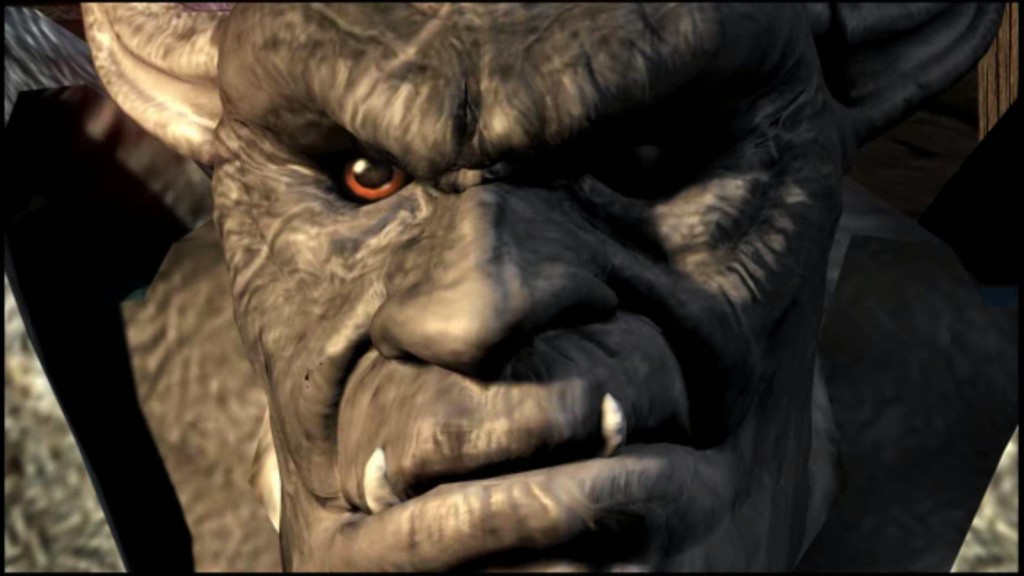
Our heroes are immediately spotted; Their expensive weapons and proud posture are an unmistakable tell-tale that they are not ordinary locals, beaten to submission and willing to suffer any burden placed upon them. Both sides exchange few hatred-filled looks. Then our heroes charge.
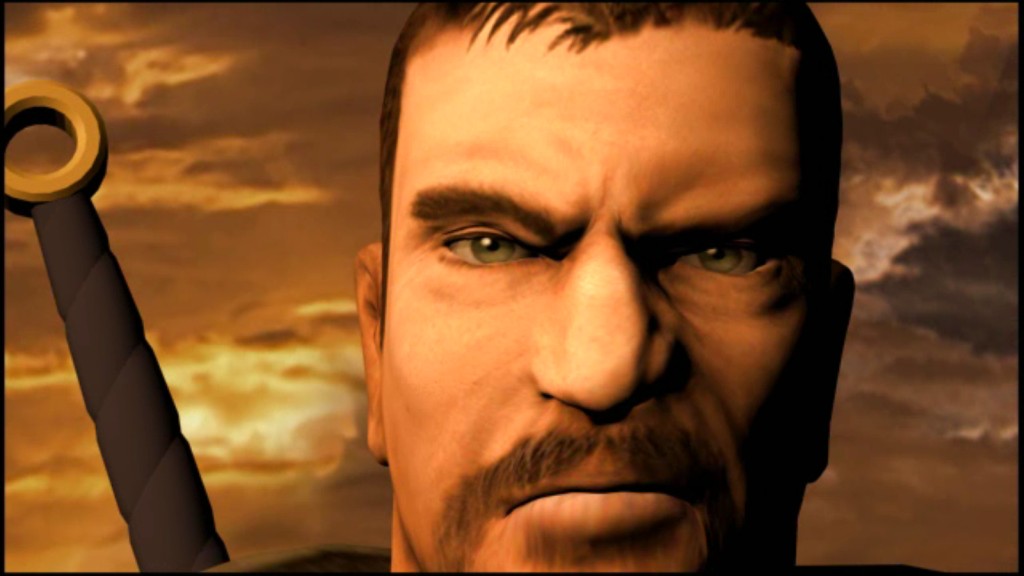
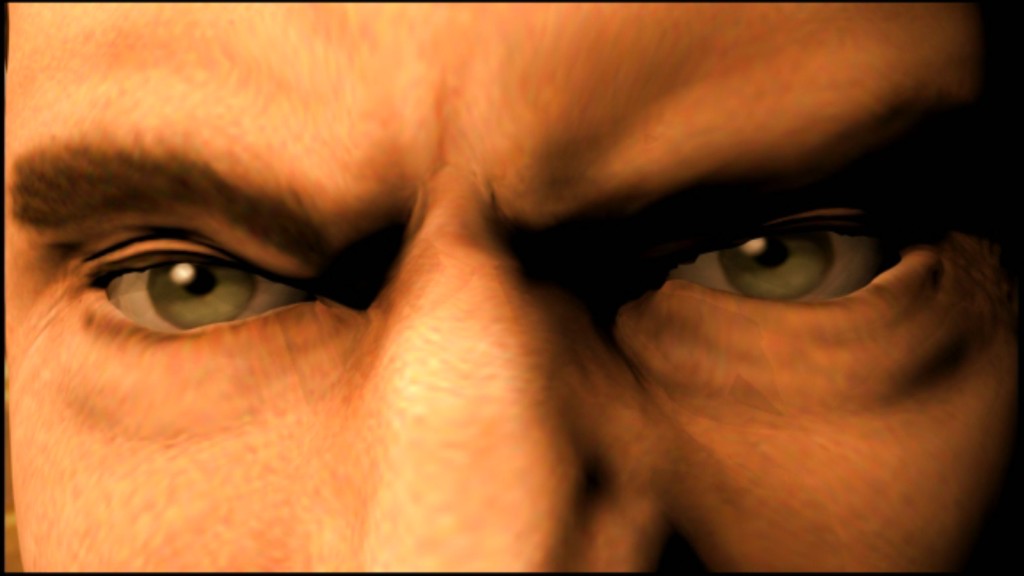

Aaaaand... Here we have the first bit of gameplay that Gothic 3 throws at us. It also happens to be the moment when the games begins to fall apart.
There are several things to be noted about this scene:
1) The very moment you are given control, you are urged to unsheathe your sword and start slashing and hacking at a sizable unit of angry orcs scattered all over the village.
2) You are given a tutorial prompt explaining combat 101, but it doesn't pause the game so you have no time to actually read it.
3) Those were two major design stumbles. The third problem is more of a continuity flaw. Let's have a look at what orcs used to look like and at their new design:
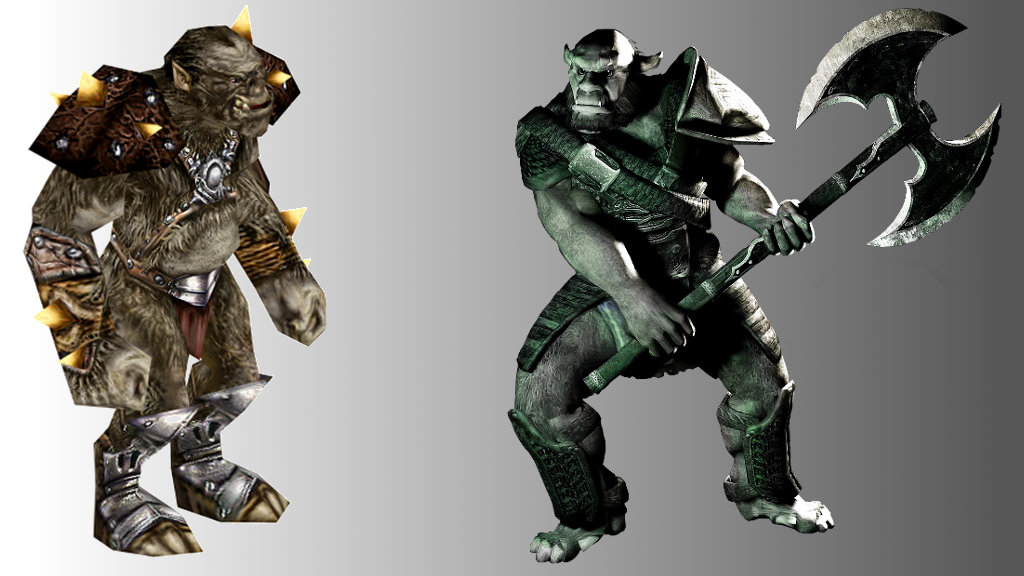
Orcs in Gothic 1 & 2 were primitive brutes with a stone-age-like culture. Gothic 3 orcs are intelligent (possibly on par with humans) and culturally our equals. It will soon become obvious that the change was made for story purposes (to make it possible for the player to collaborate with them) and it really isn't a big deal, but I still find it a tad annoying.
Also, while in the previous games, orcs used to be more or less end-game enemies, here they are used instead of the more traditional tutorial rats.
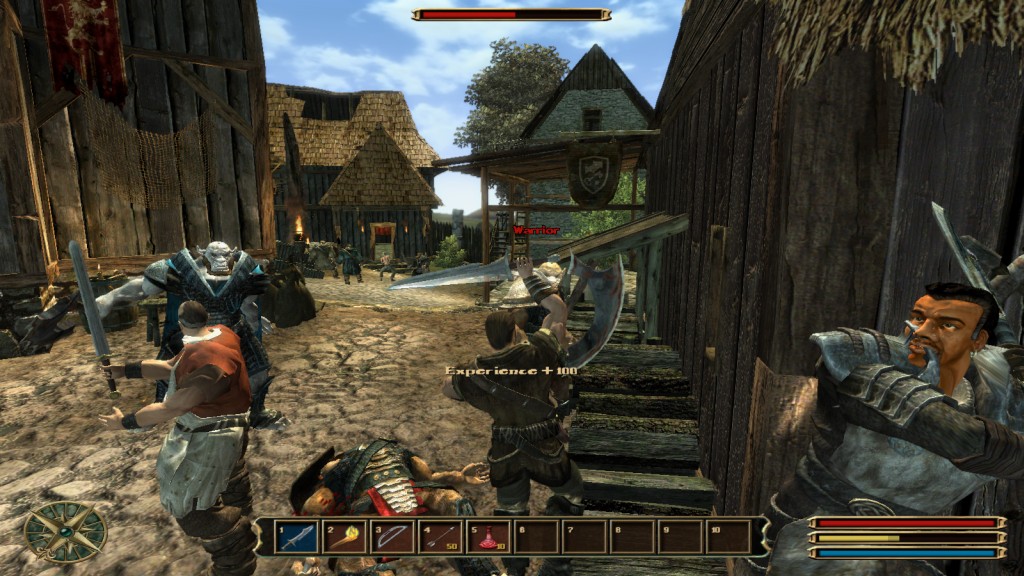
Anyway, we cut through the orcs like a knife through butter. As we move forward, we can see that all humans, including our companions, are now engaged in the ongoing battle. Looks like peaceful enslavement is no longer an option.
Orcs come in various forms. There are the lowly scouts, the more powerful warriors etc. Most importantly, there is an orc warboss, a formidable foe distinguished by his bright grayish colour and a fancy cape.
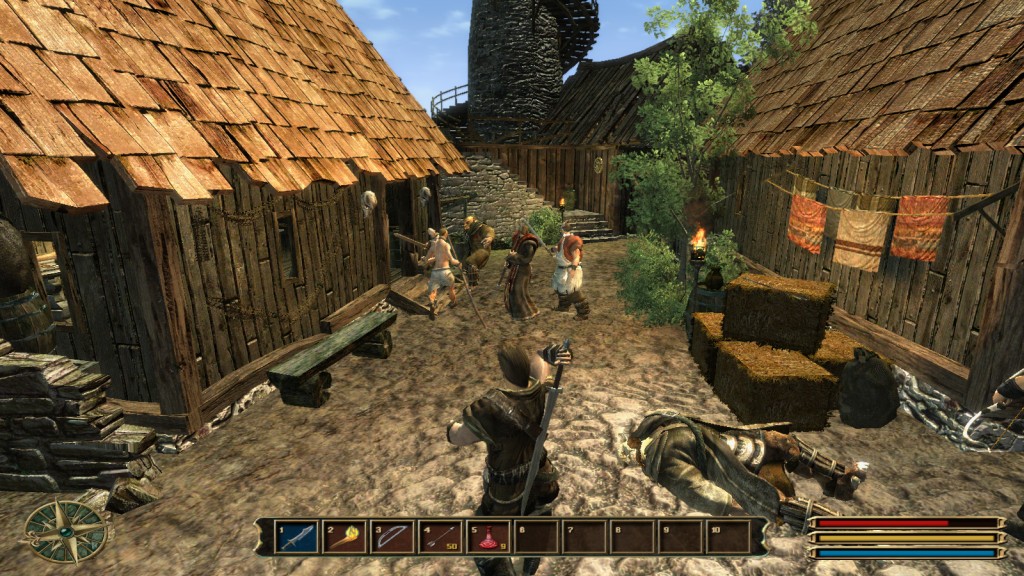
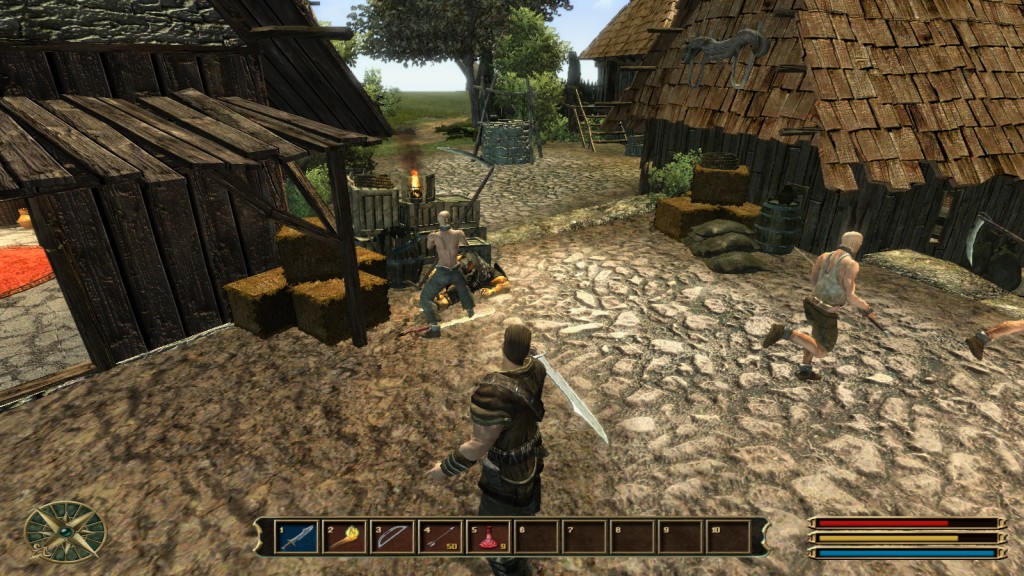
Our human colleagues are rather under-equipped, but I must admit that a giant scythe gives one a certain respectability.
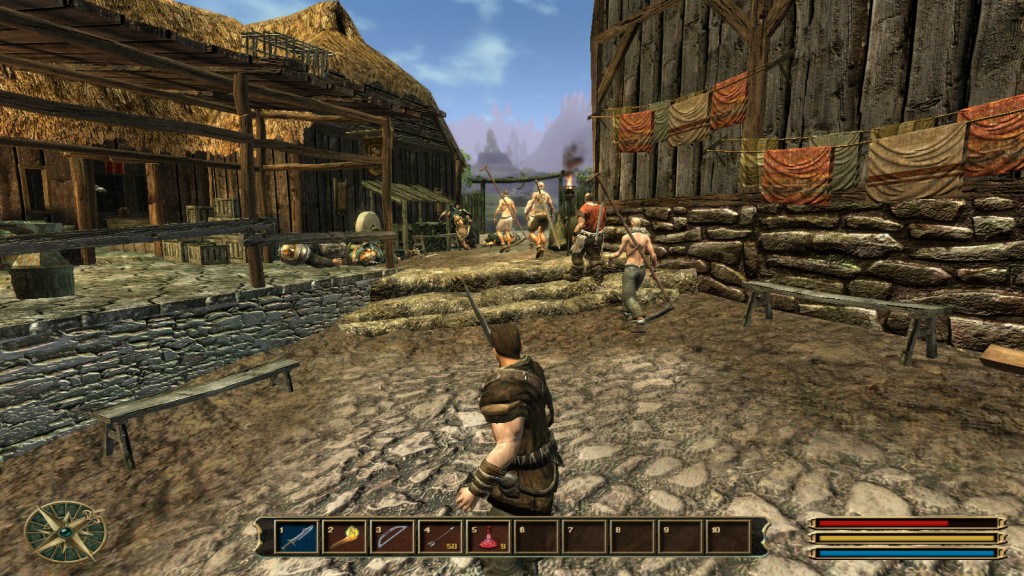
The fighting goes on for a while, but Nameless Hero's presence ultimately proves to be a deciding factor. Most orcs die fighting, some run for their lives only to be stabbed in the back. Freshly liberated villagers gather at the town square.
We follow them and meet the mayor, a pudgy and scared-looking bloke called Hamlar.
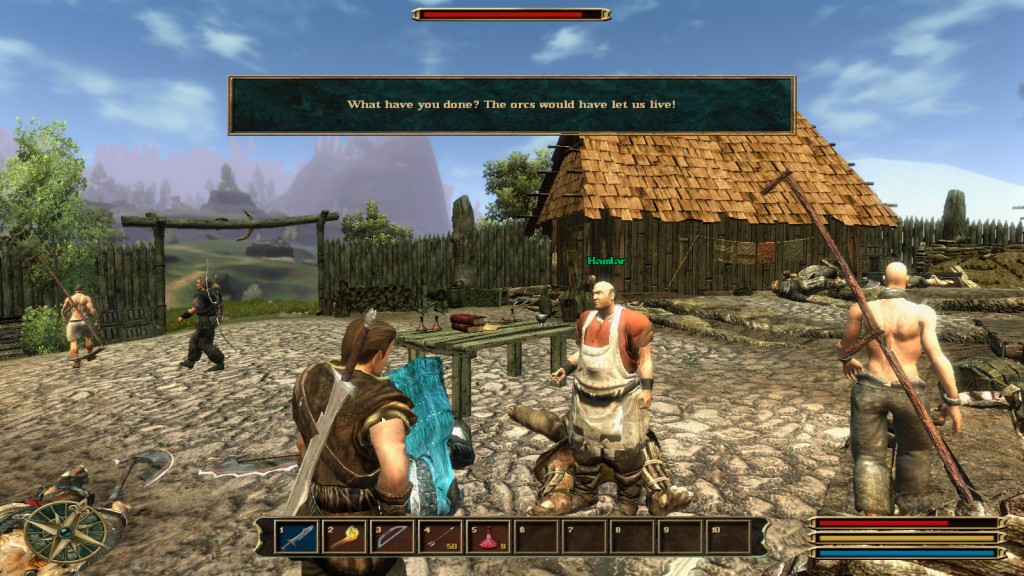
 Now Xardas will send even more of them after us! You need to go to Reddock.
Now Xardas will send even more of them after us! You need to go to Reddock.
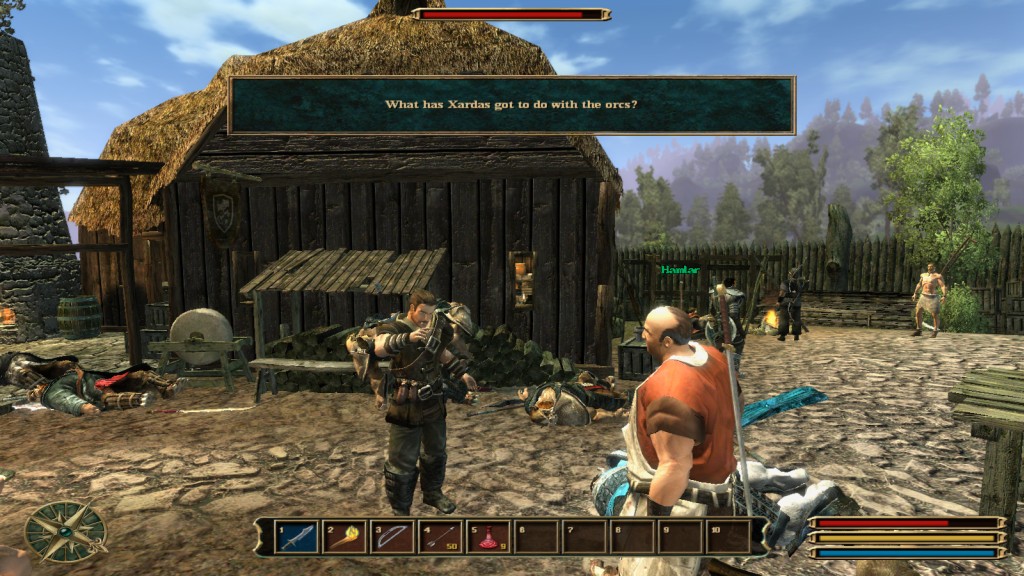
 What's wrong with you? Haven't you been here these last few weeks? Xardas is the leader of the orcs! He betrayed us.
What's wrong with you? Haven't you been here these last few weeks? Xardas is the leader of the orcs! He betrayed us.
 What else do you know about Xardas?
What else do you know about Xardas?
 He destroyed the rune magic, that filthy swine. Deprived of their magic, the paladins and mages never stood a chance against the hordes of orcs.
He destroyed the rune magic, that filthy swine. Deprived of their magic, the paladins and mages never stood a chance against the hordes of orcs.
Xardas is an enigma, a mysterious necromancer who was our chief ally for the duration of the first two games and seemed to be decisively anti-orc. However, at the end of the previous game, he revealed to us that he had been chosen to become the new Champion of Beliar, the god of Chaos. After that, our ways parted. Apparently, he's been pretty busy since then - his alliance with the orcs comes as a large surprise.
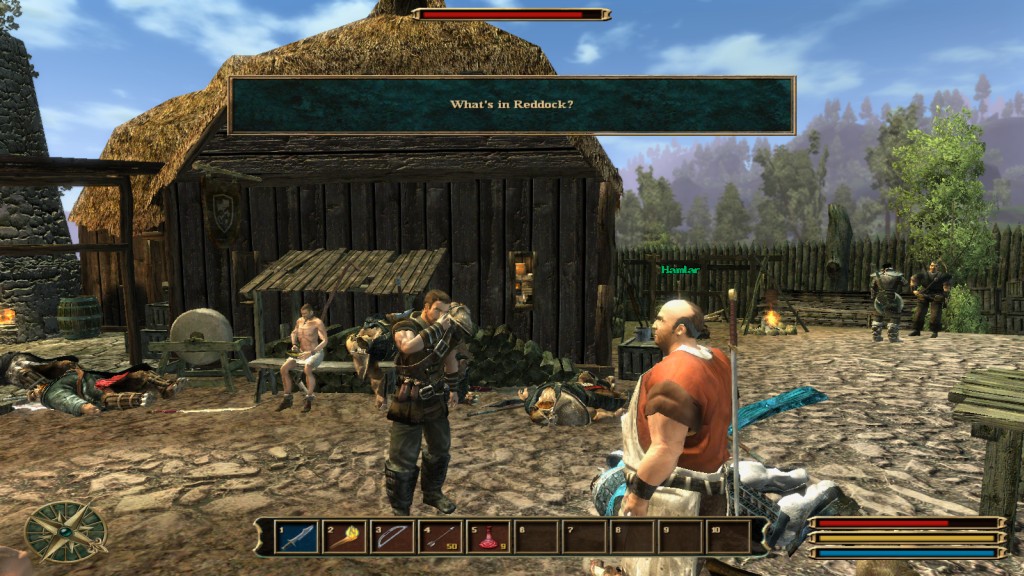
 The rebel camp. It's in the middle of the forest. Where the wolves are.
The rebel camp. It's in the middle of the forest. Where the wolves are.
 I can handle wolves.
I can handle wolves.
 Yes, but those beasts are incredibly aggressive. And you won't be able to find it by yourself. I think your buddy Gorn knows where it is. You should go talk to him.
Yes, but those beasts are incredibly aggressive. And you won't be able to find it by yourself. I think your buddy Gorn knows where it is. You should go talk to him.
 What should I tell the rebels?
What should I tell the rebels?
 Tell their leader to send us fighters. We don't stand a chance by ourselves! Now we are also in it up to our necks!
Tell their leader to send us fighters. We don't stand a chance by ourselves! Now we are also in it up to our necks!
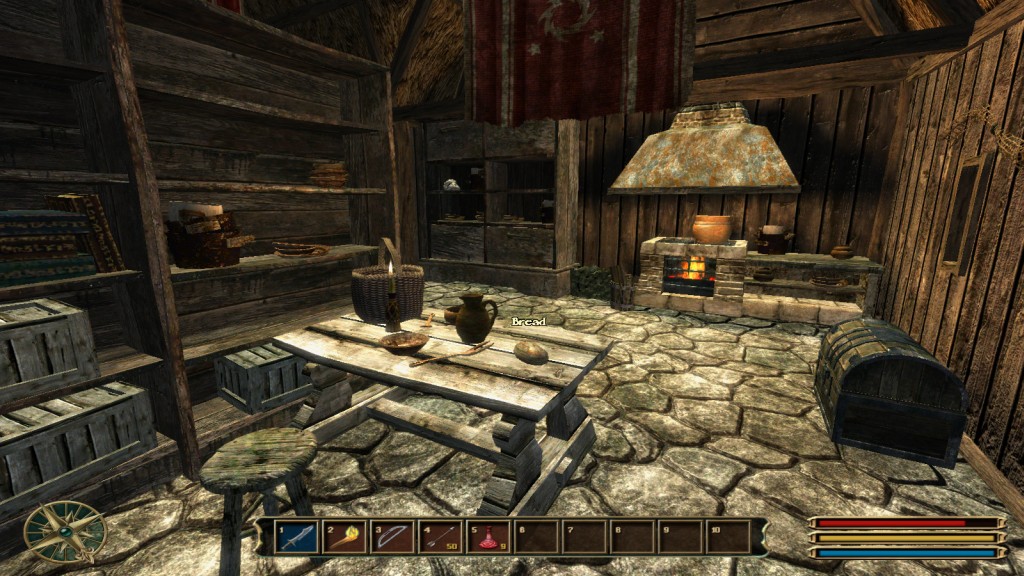
Now that we've been given some exposition, it's time to do some looting. We can freely explore all buildings in the village and help ourselves to some basic stuff. A nice thing about Gothic (compared to new TES-based games) is that there are no loading screens - interiors and dungeons are an integral part of the world.

As we rummage through unlocked chests, we get our hands on few low-level weapons. We started with an Orcslayer, a painfully mediocre piece of equipment which is only notable for having an anti-orc buff that made the initial battle a bit easier. We were also able to strip defeated enemies of their weapons (here represented by the meat cleaver-like weapon to the right) which are not only pretty rubbish but also insanely difficult to use. Well, at least we can sell them for some easy buck.
The picture above should give you an idea of how weapons work in this game: You need a combination of physical attributes and learned skills in order to equip them. The same applies to armor and shields. Weapons come in several flavours which represent the standard RPG fare: Single-handed, Large (two-handed), Bows, Crossbows... All weapon classes require specialization and lock / unlock various skill trees. We'll have a look at possible character development paths when we level up a bit.
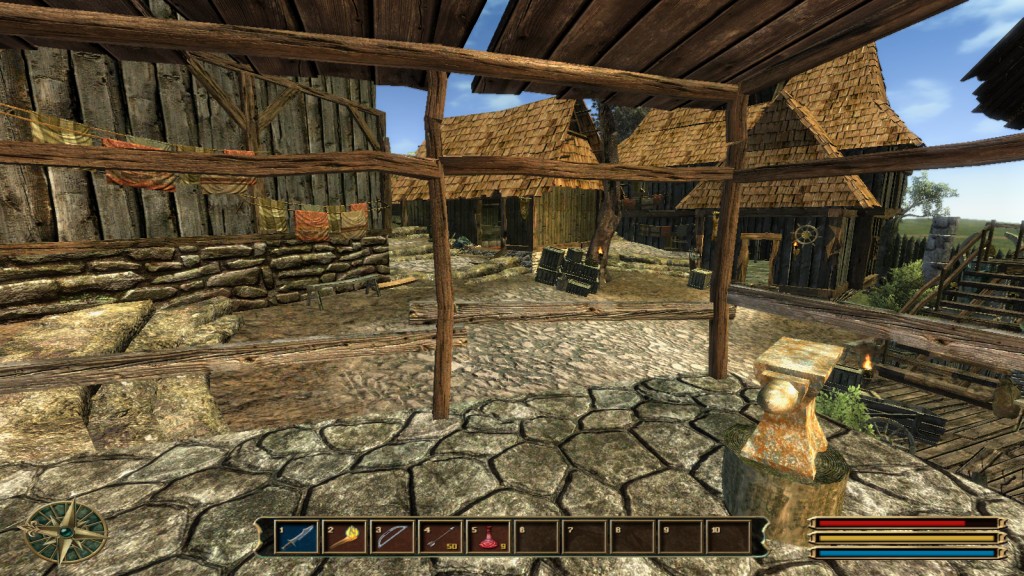
The village of Ardea itself is fairly nicely arranged and modeled, but since it's the starting point, it doesn't feature too much essential stuff.
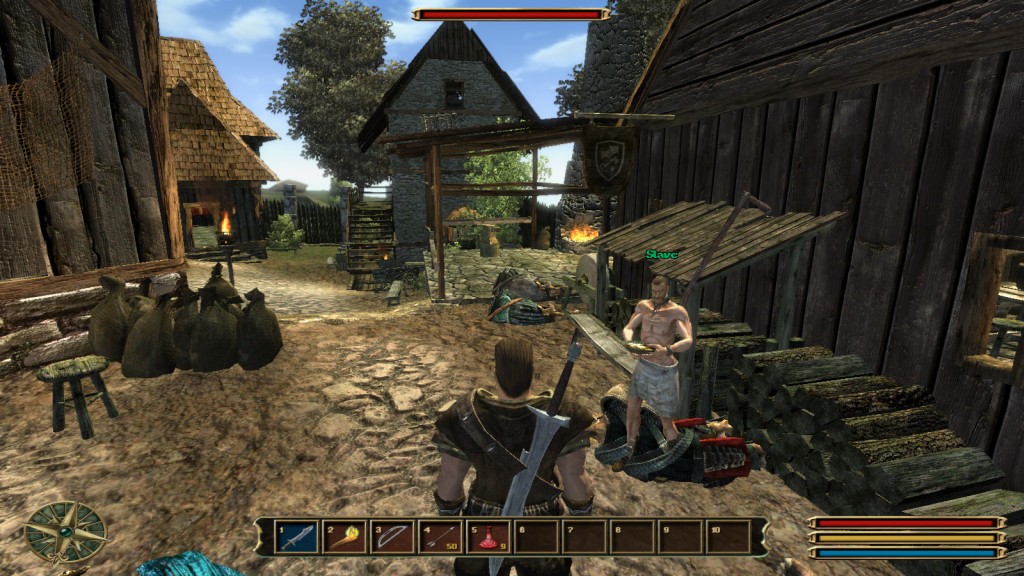
Its streets are littered with generic NPCs. Their names are green: That means they like us. Gothic 3 introduces a new faction system; fulfilling certain quests raises or lowers our approval rating amongst various power groups. We'll discuss this part of the game in greater detail when it becomes relevant.

Beyond the wooden walls of Ardea lie lush plains and, eventually, the coastline which hugs the village from three sides.

We find what must've been an alchemist's laboratory. A pedestal with a valuable-looking manuscript catches our eyes, and as we browse through its pages, few interesting pieces of information strike our fancy.
Throughout the world, we are going to find a number of books. Some are useless, other will give us various bonuses or tell us bits of lore. This one gave us five skillpoints in alchemy, a fairly generous boost.
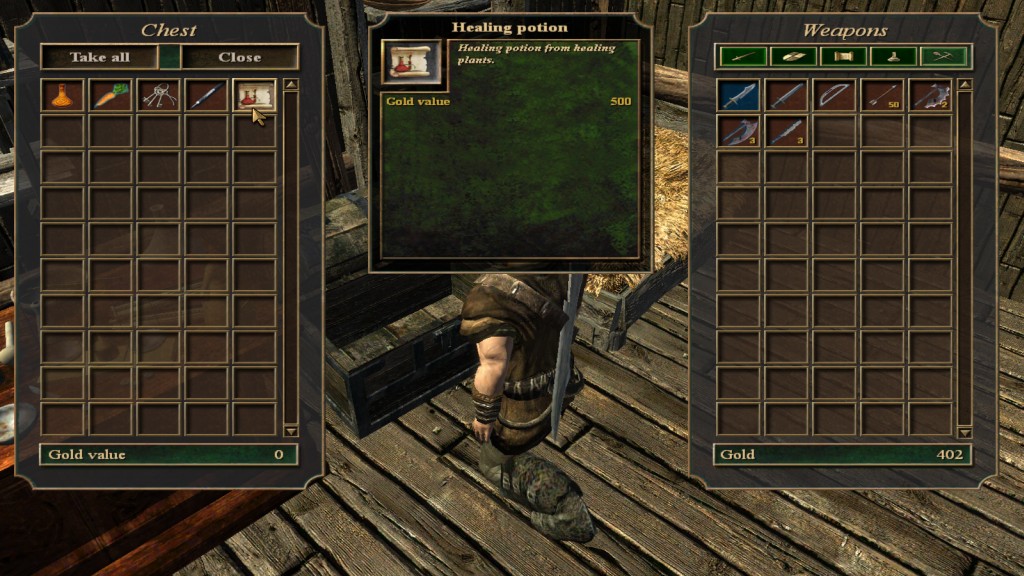
In an unlocked chest lies another welcome gift: A potion recipe. If we decide to spend a certain amount of skillpoints, we'll be able to brew various miraculous concotions by purchasing / stealing finding recipes and ingredients.
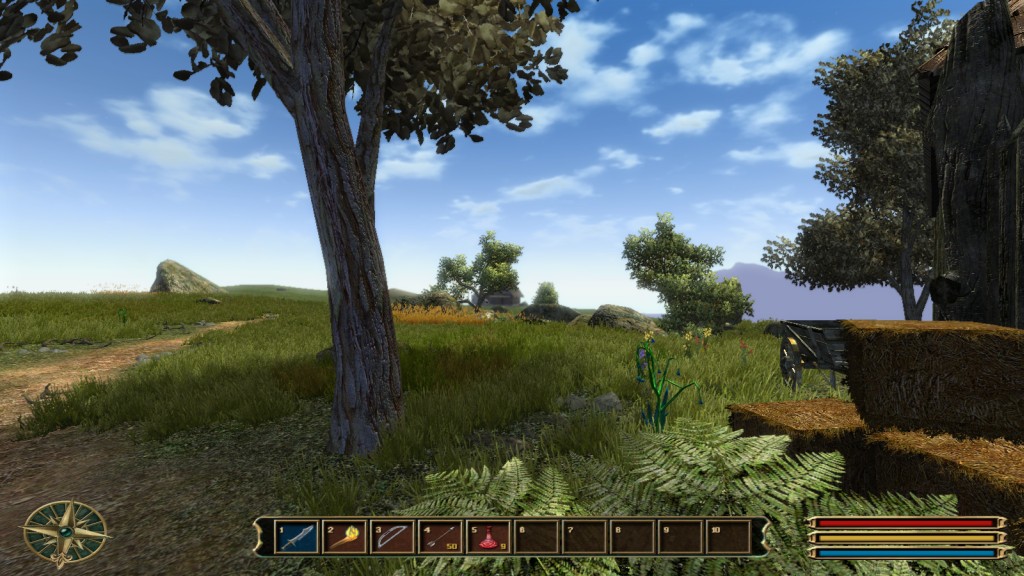
Finally, we take a step outside Ardea.
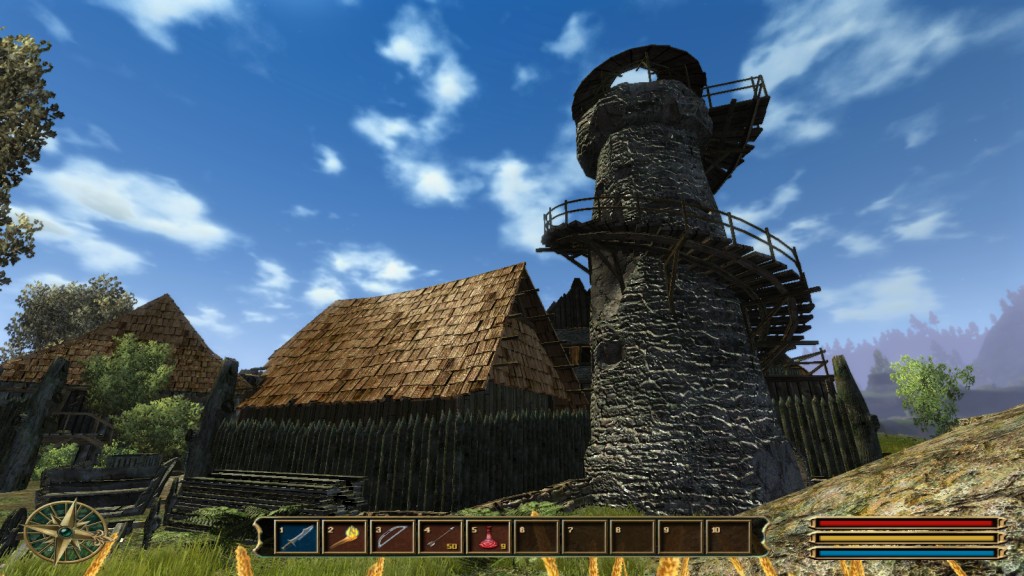
Turning back, we can see a humble guard tower / lighthouse which dominates the village. Throughout the LP, I'll include a number of scenery shots because if Gothic 3 does something right, it's the scenery.
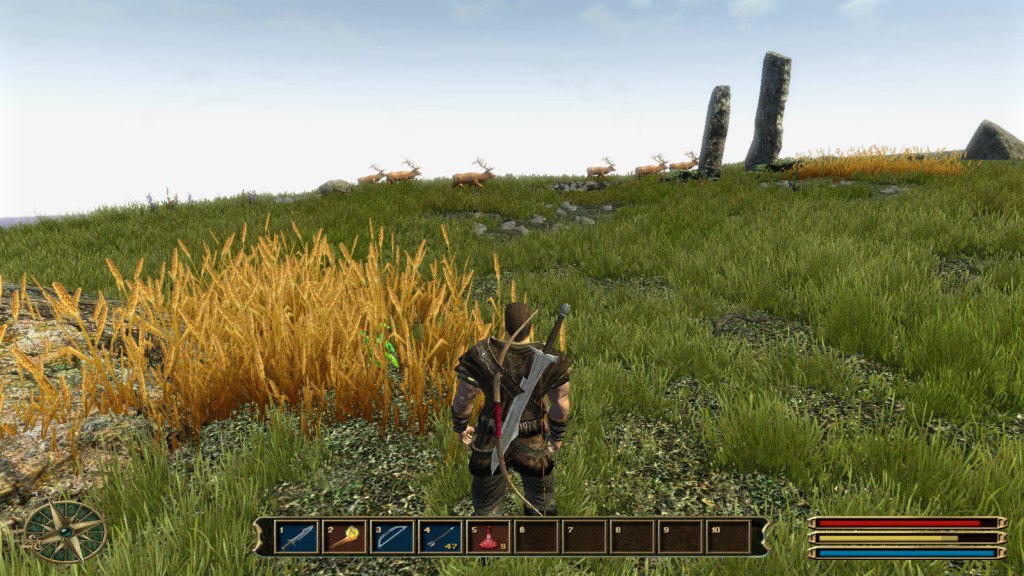
A short stroll in this direction uncovers a long stretch of plains inhabited only by game and other animals.
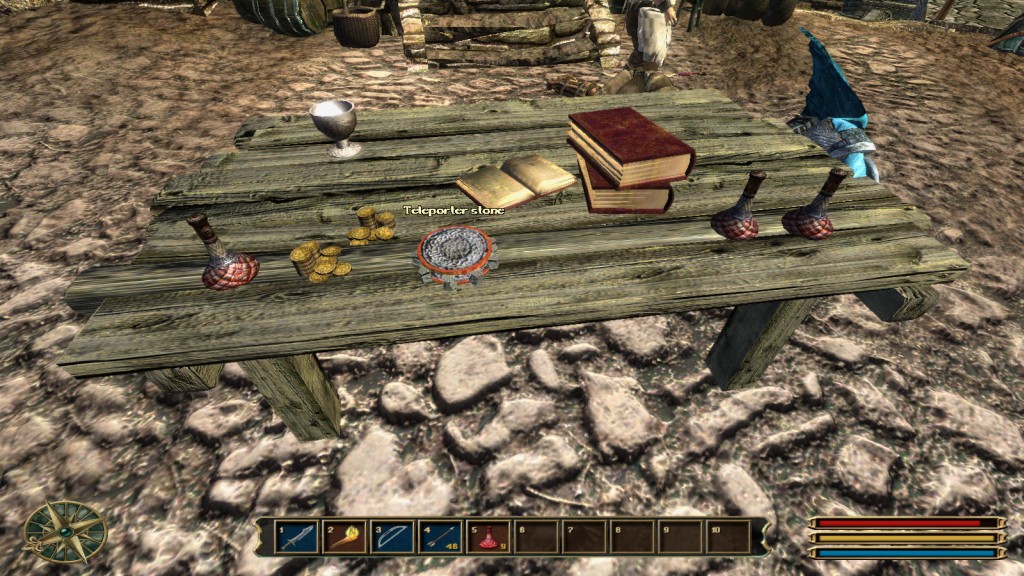
It's getting late so we return to the village. And on a table in front of the town hall, we find an interesting item: A teleporter stone.
Teleporters are the chief means of long-distance travel in Gothic games. Each settlement has its teleporter stone but some of them are pretty craftily hidden.
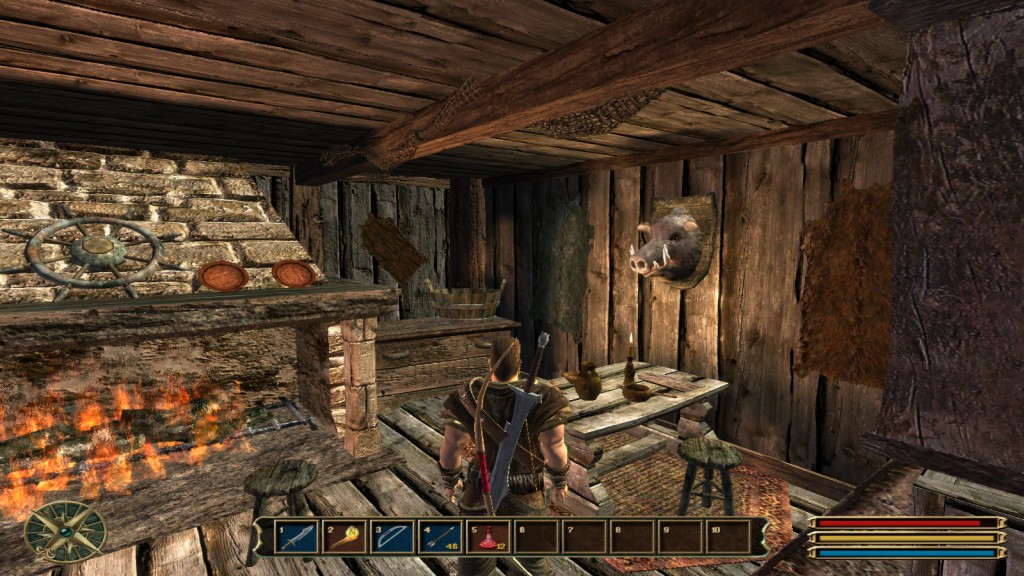
As we bumble through the village, we find few more places of interest; an inn, where we stock on booze and food.
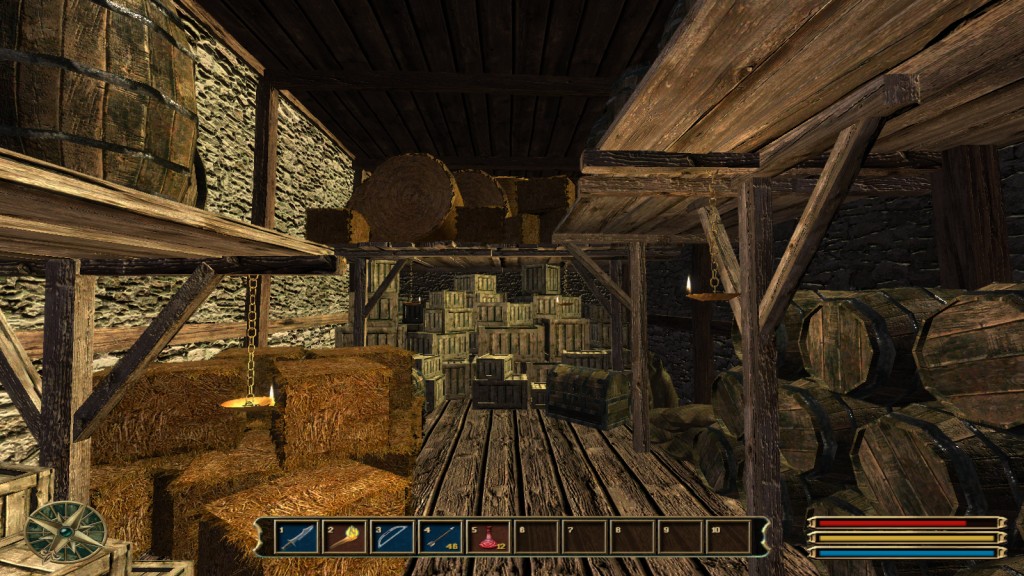
And a warehouse. Its lower level contains nothing special, however...
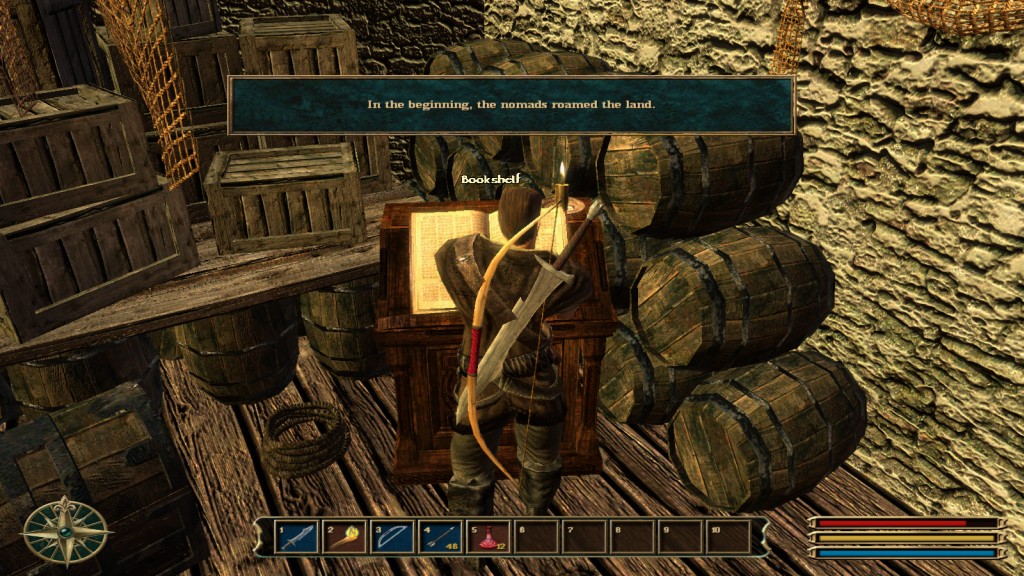
... Upstairs we find another pedestal. This time we learn about the Ancients, a lost civilization which reputedly possessed great magical powers. This isn't the last place we are going to hear about them.
In the beginning, the nomads roamed the land
And the Eternal Wanderer led the way.
Reading this excerpt gave us five points of Ancient knowledge: AK basically equals to proficiency in magic.

Outside the warehouse stands a shrine dedicated to Innos. There are three gods of the Gothic universe:
Innos, the god of Fire and Light, the Creator. He is worshiped by most humans.
Beliar, the god of Death and Chaos, a brother and nemesis of Innos, the god of choice for orcs. Beliar and Innos have been locked in a war against each other since time immemorial and have been known for manipulating history by choosing powerful champions and agents to play their games. In Gothic 1 & 2, our Nameless Hero crossed paths with some of the main earthly servants of Beliar, vanquishing them and curbing his influence. However, now he apparently seduced Xardas and with him gained greater power than ever before.
Finally, there is Adanos, the god of Water, Balance and Wisdom and the third brother. He tries to keep his siblings from getting the upper hand over each other.
Shrines serve as a means of improving our magical abilities: In Gothic, you can't turn your skillpoints into skills without consulting teachers; shrines can be basically regarded as teachers of all things spiritual. Nevertheless, we are not going to spend any points until we meet enough teachers to cover the entire array of available options.
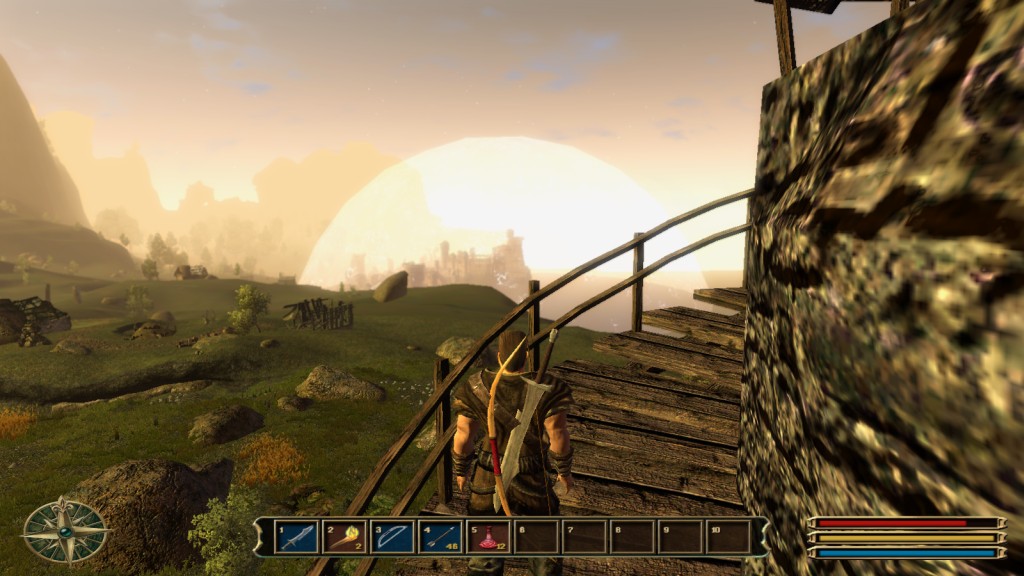
Finally we get to climb the tower we saw earlier. From one side we can see the barrier erected over Vengard. We landed quite close to the capital but that doesn't mean we'll be able to visit the city any time soon.

Anyway, we spent the day quite productively and now it's getting rather late. I think it's time to have a nap and resume our adventures when we are rested.
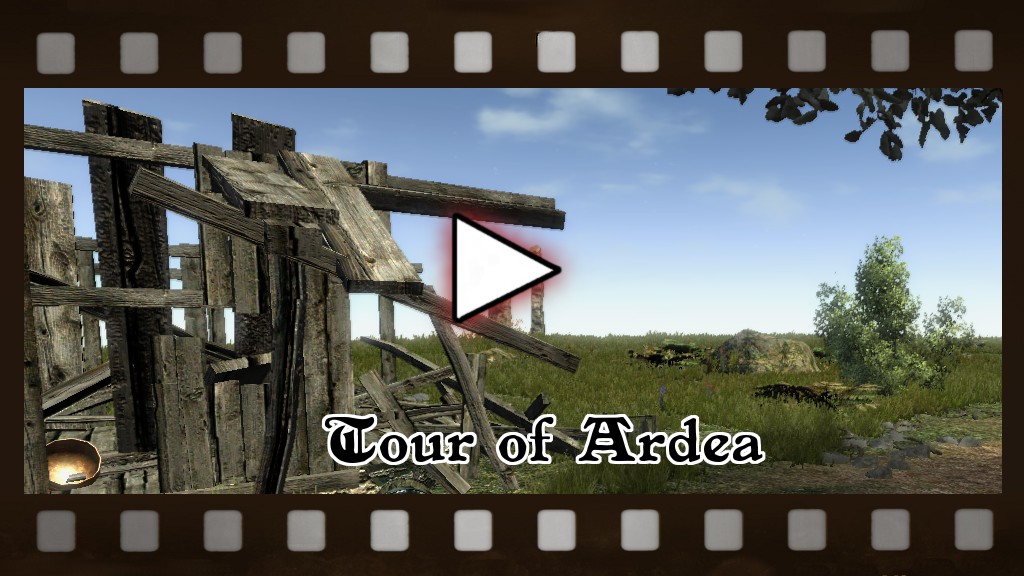
Again, click above for a video.





























 Now Xardas will send even more of them after us! You need to go to Reddock.
Now Xardas will send even more of them after us! You need to go to Reddock.

 What's wrong with you? Haven't you been here these last few weeks? Xardas is the leader of the orcs! He betrayed us.
What's wrong with you? Haven't you been here these last few weeks? Xardas is the leader of the orcs! He betrayed us.
 What else do you know about Xardas?
What else do you know about Xardas?
 He destroyed the rune magic, that filthy swine. Deprived of their magic, the paladins and mages never stood a chance against the hordes of orcs.
He destroyed the rune magic, that filthy swine. Deprived of their magic, the paladins and mages never stood a chance against the hordes of orcs.

 The rebel camp. It's in the middle of the forest. Where the wolves are.
The rebel camp. It's in the middle of the forest. Where the wolves are.
 I can handle wolves.
I can handle wolves.
 Yes, but those beasts are incredibly aggressive. And you won't be able to find it by yourself. I think your buddy Gorn knows where it is. You should go talk to him.
Yes, but those beasts are incredibly aggressive. And you won't be able to find it by yourself. I think your buddy Gorn knows where it is. You should go talk to him.
 What should I tell the rebels?
What should I tell the rebels?
 Tell their leader to send us fighters. We don't stand a chance by ourselves! Now we are also in it up to our necks!
Tell their leader to send us fighters. We don't stand a chance by ourselves! Now we are also in it up to our necks!

















